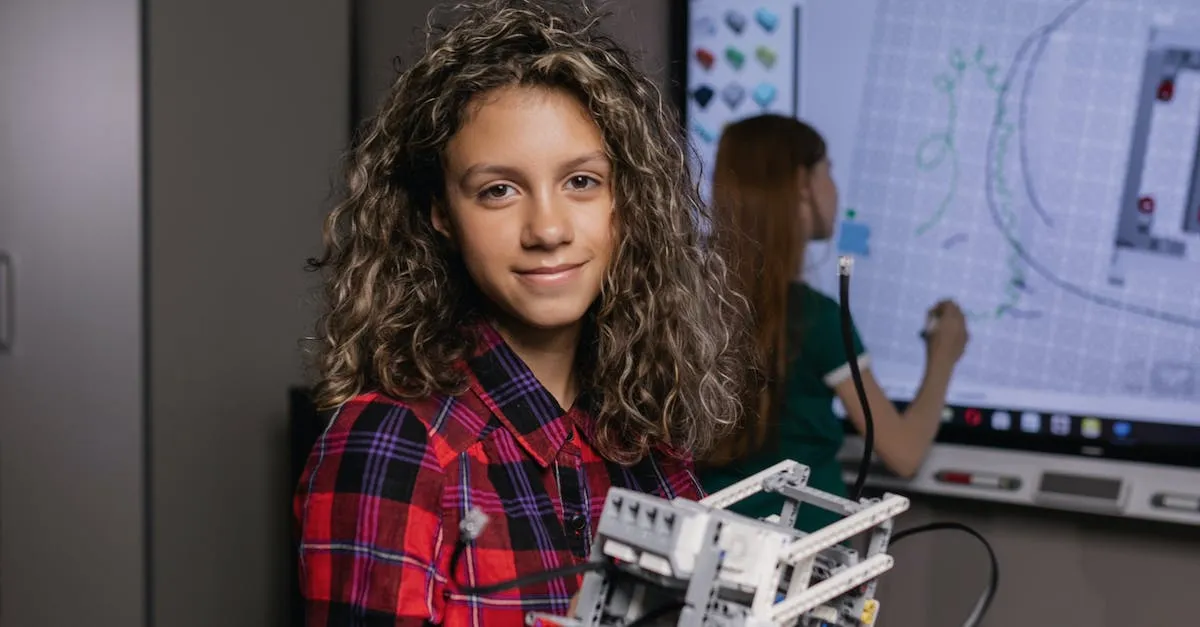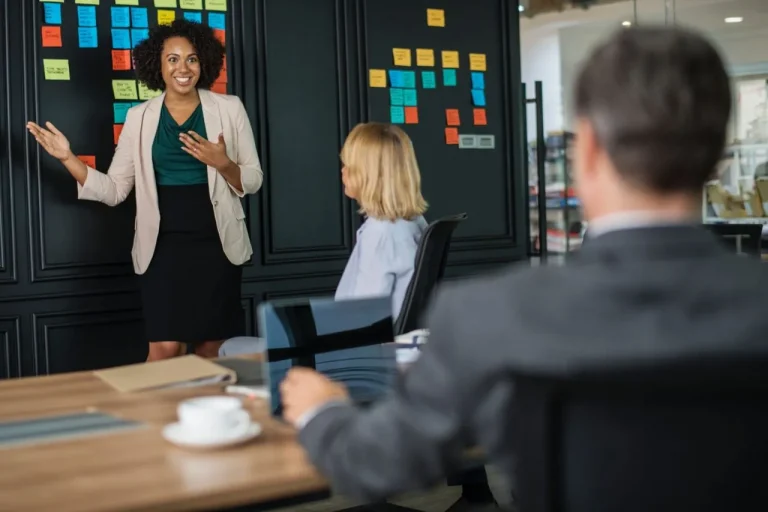How To Do A Science Project
Science projects allow you to apply the scientific method to better understand the world around you. Whether it’s for a class assignment, a science fair, or just your own curiosity, conducting an organized science experiment can be an enriching and rewarding experience.
Read on for a step-by-step guide to planning and executing a successful science project.
The quick answer is that you’ll need to choose a topic, ask a testable question, form a hypothesis, design an experiment, collect and analyze data, and finally draw conclusions from your results.
Choose a Topic That Interests You
When it comes to doing a science project, one of the most important things to consider is choosing a topic that interests you. This is because when you are passionate about a subject, you are more likely to put in the time and effort required to create a successful project.
So, how do you go about choosing a topic that captures your interest?
1. Explore your interests
Start by thinking about the subjects that fascinate you the most. Is it biology, chemistry, physics, or something else entirely? Consider the topics within these subjects that you find intriguing. For example, if you love biology, you might be interested in studying the effects of different fertilizers on plant growth.
2. Research current trends
Another way to find a topic that interests you is to research current trends and advancements in the scientific field. This can be done by reading scientific journals, attending science conferences, or browsing reputable websites such as Science Daily or Nature.
3. Consider real-world applications
Think about how your science project can have real-world applications and make a positive impact. For example, if you are interested in environmental science, you could explore ways to reduce plastic waste or develop sustainable energy sources.
By choosing a topic with real-world relevance, you not only make your project more meaningful but also increase your chances of making a difference.
Remember, the key to choosing a topic that interests you is to follow your curiosity and passion. When you genuinely enjoy what you are working on, it will not only make the process more enjoyable but also increase your chances of success.
So, take your time, explore different topics, and choose something that truly excites you!
Ask a Testable Question
When starting a science project, the first step is to ask a testable question. This is a question that can be answered through experimentation and observation. It is important to choose a question that is specific and focused, as this will make it easier to design and conduct the experiment.
For example, instead of asking “How do plants grow? “, a more testable question would be “Does the amount of sunlight affect the growth of plants?”. This question can be answered by setting up an experiment where plants are exposed to different amounts of sunlight and their growth is measured over time.
Tips for asking a testable question:
- Be curious: Start by thinking about something you are interested in or curious about. This will make the project more enjoyable and engaging.
- Research: Before settling on a question, do some background research to see if it has already been answered or if there is existing information available.
- Focus on variables: A testable question should involve variables that can be measured and manipulated. These variables should be clearly defined and controlled in the experiment.
- Avoid bias: Make sure your question is neutral and does not imply a desired outcome. The goal of a science project is to discover the truth, not to prove a preconceived idea.
Remember, asking a testable question is the foundation of a successful science project. It sets the stage for the experiment and ensures that you are conducting meaningful research. So take your time, think creatively, and ask a question that will lead to interesting and valuable results.
Form a Hypothesis
When embarking on a science project, it is essential to start by forming a hypothesis. A hypothesis is a proposed explanation or prediction about a scientific phenomenon or problem. It serves as the foundation for your entire project, guiding your research and experimentation.
To form a hypothesis, you must first identify the problem or question you want to investigate. Then, based on your initial observations and prior knowledge, you can make an educated guess about the possible outcome or explanation. A good hypothesis should be clear, specific, and testable.
For example, if your science project is about the effect of different types of fertilizer on plant growth, your hypothesis could be: “If plants are given organic fertilizer, then their growth will be greater compared to plants given synthetic fertilizer.”
It is important to note that a hypothesis is not a guess or a random statement. It should be based on existing knowledge and supported by scientific evidence. Researching and gathering information from credible sources can help you develop a well-informed hypothesis.
Remember, the purpose of a hypothesis is to guide your experimentation and provide a framework for analyzing data. It is not about proving or disproving your hypothesis, but rather about collecting evidence to support or reject it.
Keep an open mind and be prepared to modify or revise your hypothesis as you conduct your experiments and analyze the results.
For more information and examples on how to form a hypothesis for your science project, you can visit websites such as Science Buddies or ThoughtCo.
Design a Controlled Experiment
When it comes to doing a science project, designing a controlled experiment is a crucial step. This ensures that the experiment is conducted in a systematic and organized manner, allowing for accurate and reliable results.
Here are some key aspects to consider when designing your controlled experiment:
Define Variables
The first step in designing a controlled experiment is to clearly define the variables involved. Variables are factors that can be manipulated or measured in the experiment. It is important to identify the independent variable, which is the factor that is intentionally changed by the experimenter, and the dependent variable, which is the factor that is observed or measured as a result of the changes made to the independent variable.
By defining these variables, you can establish a cause-and-effect relationship.
Outline Procedure
Once the variables are defined, the next step is to outline the procedure for your experiment. This includes detailing the steps you will take to gather data and perform the experiment. It is important to be thorough and precise in your procedure, as this will help ensure that your experiment is repeatable by others.
Consider including any necessary materials, measurements, and observations that are relevant to your experiment.
Determine Equipment Needs
Another aspect to consider when designing a controlled experiment is determining the equipment needs. Depending on the nature of your experiment, you may require specific tools, instruments, or materials.
It is important to identify and gather all the necessary equipment beforehand to ensure a smooth and successful experiment. If you need specialized equipment, make sure to plan ahead and allocate sufficient time and resources for their acquisition or rental.
Designing a controlled experiment is an essential part of any science project. By defining variables, outlining the procedure, and determining equipment needs, you can ensure that your experiment is well-designed and capable of producing reliable results.
Remember to carefully document your experiment and keep track of any unexpected observations or deviations from your original plan. Happy experimenting!
Collect and Record Data
When it comes to doing a science project, collecting and recording data is a crucial step in the scientific process. This step involves gathering information and measurements that will be used to analyze and draw conclusions.
Here are some tips to help you effectively collect and record data for your science project:
1. Define your variables
Before you start collecting data, it’s important to clearly define the variables you will be studying. A variable is any factor that can be changed or manipulated in an experiment. By identifying and controlling your variables, you can ensure that your data is accurate and reliable.
2. Choose the right tools
Depending on the nature of your project, you may need specific tools or equipment to collect data. For example, if you’re measuring temperature, you’ll need a thermometer. If you’re studying plant growth, you might need a ruler or measuring tape.
Make sure you have the necessary tools before you begin collecting data.
3. Be consistent
Consistency is key when it comes to collecting data. Make sure you use the same procedures and techniques each time you collect data. This will help ensure that your results are accurate and reliable. It’s also important to collect data at consistent intervals or time points to track any changes or patterns over time.
4. Record data immediately
As you collect data, be sure to record it immediately. Waiting too long to record your data can lead to inaccuracies or forgetting important details. Use a notebook or spreadsheet to organize and document your data.
Be sure to include all relevant information, such as the date, time, and any specific conditions or observations.
5. Use graphs and charts
Once you have collected your data, it’s helpful to present it in a visual form, such as graphs or charts. These visual representations can make it easier to spot trends, patterns, or relationships in your data.
There are many online tools and software programs available that can help you create professional-looking graphs and charts.
Remember, collecting and recording data is an essential part of any science project. By following these tips, you can ensure that your data is accurate, reliable, and easy to analyze.
Present Your Project
Science Fair Boards
When it comes to presenting your science project, a well-designed science fair board can make a significant impact. Your board should be organized and visually appealing, showcasing your research and findings in a clear and concise manner.
Start by choosing a sturdy and colorful display board that is large enough to accommodate all the necessary information. Consider using headings, subheadings, and bullet points to organize your content and make it easy for viewers to navigate.
Use graphs, charts, and images to illustrate your data and findings, making them visually appealing and easy to understand. Don’t forget to include your hypothesis, methodology, results, and conclusion on the board, along with any additional information that is relevant to your project.
Remember, a well-presented board can greatly enhance your chances of impressing judges and other viewers.
Oral Presentation Tips
In addition to the science fair board, you will also need to prepare an oral presentation to accompany your project. This is your opportunity to explain your research and findings in person and engage with the audience. Here are some tips to help you deliver a compelling oral presentation:
- Practice, practice, practice: Rehearse your presentation multiple times to become comfortable with the content and delivery. This will help you remember key points and speak confidently.
- Keep it concise: Stick to the main points of your project and avoid going off on tangents. Be mindful of the time limit provided and make sure your presentation fits within that timeframe.
- Engage the audience: Use eye contact, gestures, and a clear speaking voice to captivate your audience. Encourage questions and interactive discussions to keep them engaged throughout your presentation.
- Use visual aids: Utilize props, slides, or multimedia presentations to enhance your oral presentation. Visual aids can help clarify complex concepts and make your presentation more dynamic.
- Be prepared for questions: Anticipate potential questions and prepare thoughtful responses in advance. This will demonstrate your expertise and thorough understanding of your project.
By following these tips, you can confidently present your science project and effectively communicate your research and findings to your audience. Remember to stay calm, be enthusiastic, and enjoy the opportunity to showcase your hard work!
Conclusion
Doing a science project requires planning, research, critical thinking and persistence, but it’s an incredibly rewarding way to gain hands-on experience with the scientific method. Follow the key steps and don’t be afraid to get creative – the discoveries you make through your own exploration and experimentation can be truly exciting!







